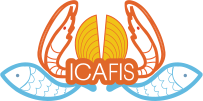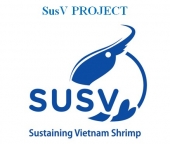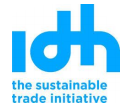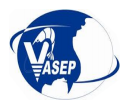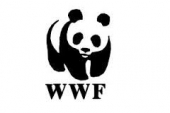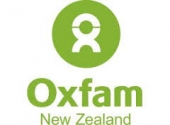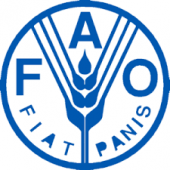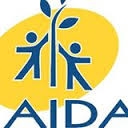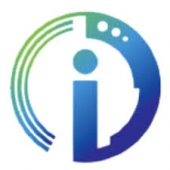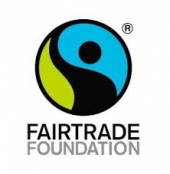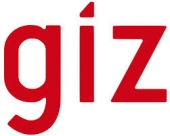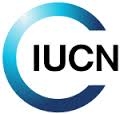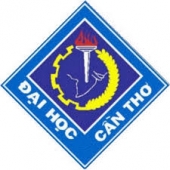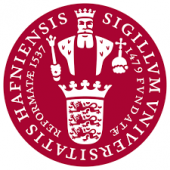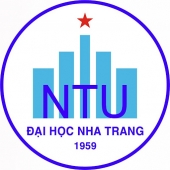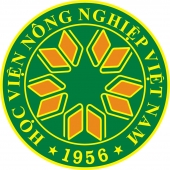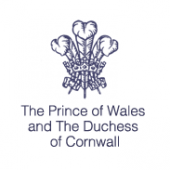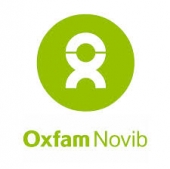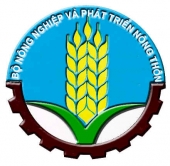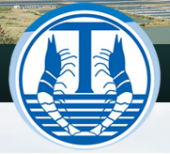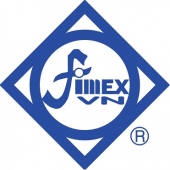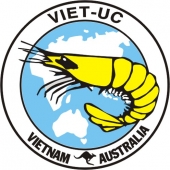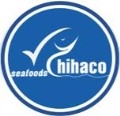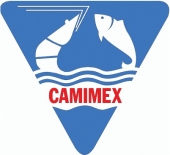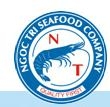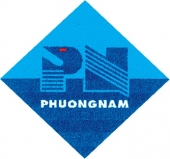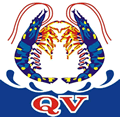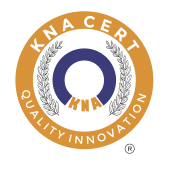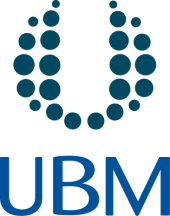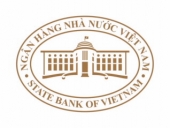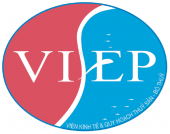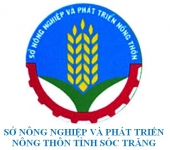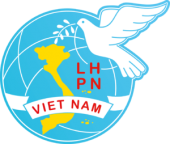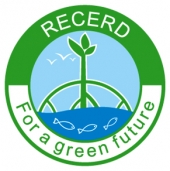
Part I. INTRODUCTION
I. Geography
Ben Tre, the land is at the end of Mekong River closed to the South China Sea with four estuaries: Tien Giang, Ba Lai, Ham Luong and Co Chien; its coastline is over 65 km and sea-territories over 26.000 km2; Biodiversity system of the esturary is plentiful (over 280 kinds of unicellular alga, 96 kinds of aquatic animals, 16 groups of aquatic species; over 7.130 ha of coastal mangroves with 3.250 ha being preserved,…) that is good condition to develop fishery aquaculture and exploitation. Coastal inhabitant community for hundreds of year do the traditional career to live and to carry out revolution through periods of national liberation and construction.
II. Opportunities and Challenges:
Opportunities: received the concern from Party and State agencies at all levels, socio-economic and scientific organizations to the coastal fishery resources development and protection as well as improving living standard of community in many fields: infrastructure investment, awareness enhancement, cooperatives, co-management knowledge, food safety and hygiene, environment geodesy, resources preservation, harvest control of molluse, MSC criteria,...
Challenges: the number of coastal fishing boats/vessels is rather large with many kinds of fishing gears, mesh sizes are not suitable; policy and mechanism and management forms are not effective; clam robber has happened in some weak management cooperatives leading to fishery resources damaged, impact on the development process of biodiversity system, ecosystem balance, social security and economic and cultural community life.
Part II. DEVELOP CO-MANAGEMENT MODEL OF CLAM EXPLOITING AND MANAGEMENT COOPERATIVES IN BEN TRE PROVINCE
The management model of cooperatives that manage and exploiting clam in Ben Tre province is the model which the State shares some rights to local community to manage, develop and exploit the natural clam resources in the coastal area of Ben Tre. Such as: to give the land-use right of alluvial area to manage and exploit natural clam; to manage and use labourers who are members of cooperatives in clam management and exploitation activities; management of financial expenses according to Budget Law, Cooperatives Law and regulations and action mode which are approved by members or representatives from cooperatives in festivals.
I. Establishment of management mechanism and system of clam cooperatives in Ben Tre province
Before 1980, clam aquaculture was still unplanned career, inhabitants only used natural clam area to pick up clam as food or product to sell in rural markets or exchange into salt, rice, other kinds of food to cover their family life. At the end of 1980, some Hong Kong and Taiwan businessmen investigated and purchased clam through fishery export and processing enterprises but small scale (afar trade) then movement of natural clam aquaculture started to develop. They collect clam from natural clam seed area in Thanh Phong – Thanh Phu, Thoi Thuan, Thua Duc - Binh Dai to aquaculture in near areas with large scale and yield according to market demand in some Asian nations as boiled and frozen clam.
With the feature of biological reproductive resources but easily damageable, the resources can be exhausted, the natural environment will be degraded if inhabitant community do not combine resources exploitation with protection. Otherwise, clam is also valued exported fishery product if it meets criteria of food safety and hygiene by strict control and management process according to the international quality control system. To poor coastal inhabitants community, clam is also developed object that is suitable to the aim of hunger elimination and poverty reduce because of easily aquaculture, little disease and low investment. Therefore, if the right of management and exploitation is given to individuals leading to conflicts and difficulties in resources controlling and harvesting and preservation process.
Basing on above specific factors, PPC has policy on establishment of clam management and exploitation cooperatives to manage natural resources that is valuable, export value and high effectiveness to programs of hunger elimination and poverty for coastal fisherman community to do well control processes and organize the profit share to poor fishermen community, to pay taxes and to decentralize the management of cooperatives’ activities to CPC.
As province’s policy, some areas has took this opportunity to establish cooperatives, fishery cooperatives to manage and exploit the valuable natural resources as Thanh Phong – Thanh Phu, Thoi Thuan – Binh Dai,…. then these cooperatives were broken continuously and the resources has been destroyed. The reasons: fishermen’s life is too poor, management staffs are not much experienced, management procedure is subsidized strongly, unstable market, other inhabitants near the area also came to exploit meat clam and seed clam in cooperatives’ clam area and sold with very low price of 300-500 VND/kg of meat clam to have short-term interests.
Until to the middle of the year of 1990, provincial cooperatives association was established to manage the cooperatives’ activities according to the Law of Cooperatives, including fishery cooperatives. So the association cooperated with Department of Fishery in planning re-organization of clam management and exploitation cooperatives in the province. By many management models, festivals were held, the head of cooperatives was elected, the procedure of profit distribution to members but cooperatives’ activities were still unstable. The main reason is the management staff’s ability is not suitable to the task, the mechanism of public and democracy is not implemented fully and equally, unsuitable profit distribution long lasted so it did not received the agreement from members.
Understanding the above reason, provincial authority established the steering committee to strength cooperatives with participants: representative’s head committee of the provincial cooperatives association, director committee of Department of Fishery (now Department of Agriculture and Rural Development), DPC, CPC. They participate in all steps from collecting farmer’s suggestion through self-managed people teams to each hamlet, commune on member development scale, personnel election to the head committee of cooperatives as well as its interest distribution.
The steering committee and the head committee of cooperatives re-unify the management organization, development scale and the way of interest distribution. Until July, 1997, the new kind cooperatives Thoi Thuan – Binh Dai officially was established with the name of Rang Dong Fishery Cooperatives. Its feature is mobilizing all household in commune to part in cooperatives with the main function of clam resources exploitation management and consumption on the area of 900 ha of coastal tide area that was temporally distributed to solve work for labourers, suitable interests distribution and increase income, improve member’s living standard as well as speed up the provincial socio-economic development.
New established production and management procedures basing on the co-management mechanism and public and democratic principle, that are implemented strictly by the committee of Head’s cooperatives, have brought high agreement from thousand of members.
II. Management and organization system by co-management model of clam cooperatives in Ben Tre province:
The above diagram shows that the high and closed concern from sectors, levels to clam aquaculture and exploitation community in Ben Tre, specially:
Government and Ministries: issued the Law of Cooperatives, Law of Minerals and Resources, Law of Fishery and guidance by management ministries …. Have affected on enhancement of legal consciousness to aim at sustainable development; have also shown some basic rights of cooperative economic organization in production to promote and protect community’s interests.
Provincial People Committee: decides policies on land, forestry distribution for cooperatives to manage and exploit; issue the mechanism of interest distribution, living standard improvement for community; issue decisions on management and exploitation focusing on resources preservation, protection of environment human ecosystem…
Functional sectors cooperating with district people committees: provide advice to PPC to develop suitable policies for protection and reproduction of resources, environment, human ecosystem and community development.
People committee of districts: carry out and control the implement of the State’s policies to cooperatives, of social order stabilization, implement co-management to enhance responsibility, to protect legal interests and to improve community’s living standard.
The Head committee of cooperatives: manage and exploit resources to legal regulations and guidance documents of specific agencies. To distribute interests and manage labourer basing on co-management mechanism, to do given tasks from specific agencies and to ensure legal, equal, public and democratic principles.
III. The effectiveness of co-management model with the form of clam management cooperatives in Ben Tre province:
Resources, natural resources, ecosystem, … are preserved and developed durably.
The application of product harvesting controlling process and forecasting environment survey bring higher and higher production effectiveness.
Organization machine and mechanism of interests distribution are legal suitable and democratic.
Community’s interest is shared basing on the principle of transparency, public to receive the high agreement in community.
The income of community increases day by day, problems of sex equality and children right are focused on by cooperatives and authority at all levels.
To absorb investment capital to develop infrastructure and expand market. The socio-cultural life is improved day by day.
Cooperatives’ social activities
The effectiveness of new cooperatives model as Rang Dong cooperatives has absorbed concern from leaders and representatives of government and international organizationswho have come and visited the cooperatives, highly appreciatedthe model as the advanced one to be introduced to other communes and provinces in our nation. Rang Dong cooperatives has received many prizes, diploma of merit, labour decoration from Party, State, Trade Union’s organizations and Association at all levels. Its model is considered as typical one from 1997 to now.
As Rang Dong Fishery cooperatives, Dong Tam-Binh Dai Fishery, Bao Thuan, Bao Thanh, Tan Thuy, Lac Dia – Ba Tri; Binh Minh, Doan Ket, Thanh Loi, Hai Duong, Phong Hai-Thanh Phu; Vinh Tien-Cho Lach was established. At the end of 2006, Ben Tre has 13 fishery cooperatives and clam aquaculture groups with 9.744 member households that produce stably in districts: Binh Dai, Ba Tri, Thanh Phu and Cho Lach; the given land area of 7.800 ha in which 4970 ha is exploited and harvested. The remaining area has not been exploited fully as the lack of seed, capital, moreover some cooperatives are weak in management, protection of clam area, the effectiveness is low so they dare not to expand the aquaculture area.
During the development process fishery cooperatives have always received the concern from leaders of province, the ministry and other sectors at all levels. Many policies, projects and scientific research programs that is cooperated to carry out by institutes, universities, interior and foreign socio-economic organizations and Ben Tre Fishery sector, as:
Policy:
PPC distributed land to cooperatives to manage and exploit (1997); Taxation Bureau imposed to reduce the business income tax (2004); the provincial association of cooperatives operated according to the Law of Cooperatives (1997); Department of Fishery guided to apply co-management mechanism (2003); provincial association and department of fishery (Department of Agriculture and Rural Development) guided to establish association of cooperatives (2008); to train skill of management and control in harvesting, disease, environment, finance,….
Mechanism:
+ Management of environment and resources: Beside application of the Law of Fishery, Law of resources and mineral, Law of cooperatives; provincial fishery cooperatives carry out specific regulations as: regulation of Department of Fishery (1997) on the ratio, size and harvest seed and meat clam exploitation; regulation of PPC (2001) on mangrove forest preservation; regulation of Department of Agriculture and Rural Development (2004) on hunting wide animal…
+ Management of food safety and hygiene: on 7, Jan 1997, the Ministry of Fishery issued control mechanism on Safety and Hygiene of harvesting area of mollusk, assigned task to NAFIQACEN on cooperation with Department of Fishery to develop program in Tien Giang, Ben Tre. In March 2000 EU certified Vietnamese control program; it is the foundation that Ben Tre clam to be exported to America, Japan, Korea,… until now.
IV. Lesson learned from the co-management model of clam management and exploitation cooperatives in Ben Tre.
l Need to have support from the Party, State agencies at all levels, functional sectors and time to mobilize fishermen’s response to implement the sustainable development program of natural resources.
l Need to develop community-based management model according to co-management model mechanism to create the high agreement from locality through suitable mechanism and legal policy to community’s expectation.
l Need the cooperation among State agencies at all levels and community to develop a system of unified, suitable, legal and democratic mechanism on right and interests distribution.
l Need to establish the Leading Committee at all levels and Management Board of Model including staffs who are skilled and hearted then trained to shouder the task.
l Need to have investment policy on improvement community’s living standard and mobilization community to part in local and national socio-economic and cultural development programs.
l Need to legalize into community’s life: eg: regulation on parent clam preservation, harvested size of clam seed, biodiversity system, harvesting control program of molluse, regulations on tax, labour management, relevant resources management,…
l Need support on initial investment of infrastructure to absorb partners’ investment on local economic, cultural, social aspects, to improve the product’s value, community’s living standard, resources preservation and development consciousness.
l Educate and develop community’s culture through programs on traditional culture, tourism, civilization life in community.
l Expand co-management scale and form as enough conditions and favorable political and historical environment.
Eg: Thanh Phong – Thanh Phu co-management model.
Part III. THE POLICY OF CO-MANAGEMENT MODEL DEVELOPMENT IN BEN TRE PROVINCE:
It origins from the fishery resources sustainable development and protection need: environment, disease, season, clam seed resource, parent clam, biodiversity system including natural nutrition for kinds of fishery, special ecosystem,…
It received the sponsor from FSPSII program of DANIDA: support to improve the management and development skill of fishery sector (SCAFI/TW).
To develop the effectiveness of co-management models of clam management and exploitation cooperatives in Ben Tre (1997 to now).
Approach to market: to control food safety and hygiene, environment protection, living environment, resources, traceability, brand name, community management and development.
I. The target of co-management model development in Ben Tre
To improve the awareness of co-management to sustainable develops the fishery sector: effectively protect the fishery resources, natural resources, environmental landscape, ecosystem, biodiversity system,…
To improve community’s living standard.
To raise awareness and market approach skill of community
To raise awareness and adaptation ability to climate change.
II. Development system of Co-management model in Ben Tre
Establishment of Management Board of co-management model in province: The Board includes representatives from PPC, leaders from relevant sectors as Department of Agriculture and Rural Development, Department of Resources and Environment, provincial association of cooperatives, State bank, Department of Planning and Investment, Department of Finance, Department of Industry and Commerce, Provincial Border Command, Provincial Security and DPCs in Ben Tre.
Development of model:
1. Fishery co-management model in Thanh Phong, Thanh Phu: is the model that is assigned some rights by the State to manage and exploit and develop coastal fishery resources, forestry resources, to renew and develop the historical area Thanh Phong, Thanh Phu, Ben Tre:
+ To assign land use of coastal alluvial area.
+ To assign land use of natural clam resources
+ To assign land use of 6-nautical mile water surface
+ To assign land use of the historical area
+ To assign land use of labour use
+ To assign land use of interest distribution
According to regulations and laws, village regulations, action procedures developed by community.
2. The co-management model of biodiversity preservation area in the Ham Luong Estuary: is the model that received right distribution from the State to manage, exploit, protect and develop fishery resources and biodiversity system in the mouth of Ham Luong river.
+ To assign management right of water surface, resources, biodiversity system in the mouth of Ham Luong river to communities at 8 communes in two districts: Ba Tri, Thanh Phu basing on regulations and laws, village regulations, action procedures developed by community.
3. Synthetic co-management model in coastal area in Thoi Thuan Commune, Binh Dai District: is the model that received right distribution from the State to manage, exploit, protect and develop fishery resources and mobilize to establish association of clam cooperatives in Ben Tre:
+ To assign land use of coastal alluvial area.
+ To assign land use of natural clam resources
+ To assign land use of 6-nautical mile water surface
+ To assign exploitation of the historical area
+ To assign right of labor use
+ To assign right of interest distribution
+ To assign right of establishment of associations of cooperatives
Basing on regulations and laws, village regulations, action procedures developed by community.
4. The co-management model of snail at Vinh Binh commune, Cho Lach District: is the first model in fresh water region, the model that received right distribution from the State to manage, exploit, protect and develop fishery resources and renew and develop the historical area in Thanh Phong, Thanh Phu, Ben Tre:
+ To assign management right of snail preservation area.
+ To assign management right of the ecological tourism area Vinh Binh
+ To assign right of labour use
+ To assign right of interest distribution
Basing on regulations and laws, village regulations, action procedures developed by community.
Part IV. DEVELOPMENT SOLUTIONS
R & D of science and technology
Fishery cooperatives carry out projects, scientific and research programs with Department of Fishery, institutes and universities as:
+ Institute of Nha Trang Oceanography cooperates with Department of Fishery to do Scientific Theology of some protection solutions, clam and oyster resources development in the coastal tidal area in Ben Tre (2001).
+Research Institute of Fishery Aquaculture II cooperated with Department of Fishery to carry out research project on Ben Tre clam resources protection and development; investigation projects on Ben Tre clam aquaculture. To investigate and assess the features of biology, growing and productivity of Ben Tre clam. To analyze clam diseases … (2004).
+ Hai Phong Institute of Marine Fisheries cooperated with Department of Fishery to implement the project: “Survey on coastal Environment”. (2003)
+ Besides many individuals and scientific research organizations cooperated with provincial sectors to implement research projects on water environment features and clam primary productivity in water chasm in Ben Tre (2001, Nguyen Tac An), geochemistry, geomorphology and flow in clam areas (2001, Nguyen Van Luc); the biological features and Ben Tre clam aquaculture technique (1996, Nguyen Huu Phung)…
+ To clam preservation and aquaculture in Ben Tre really are meaningful as Institute of fishery aquaculture II currently cooperates with Department of Fishery (Department of Agriculture and Rural Development Ben Tre) to carry out the project:”To define the reason of annual clam death and to provide the solutions” (2007); Rang Dong Fishery Cooperatives coordinates with Trung Son University (China) to develop the project: “To produce man-made clam seed in Ben Tre” (2008). Southern Sub-Institute of Fishery Economics and Planning cooperated with Department of Agriculture and Rural Development Ben Tre to implement the Ministerial project: “Study on development and protection model of clam and black cockle in the river’s mouth area in Tien Giang, Tra Vinh, Ben Tre (2008), Nha Trang Institute of Oceanography coordinates with Department of Agriculture and Rural Development Ben Tre to carry out the project:” To investigate and forecast the Ben Tre clam aquaculture environment”
Community education:
Through the program of FSPS II DANIDA (2006-2010), the Department of Fishery has combined community education activities on development of co-management model; training of Fishery Law, Cooperatives Law, Environment Law, Minerals and Resources Law, training on management, observation skills, as well as assessment skill on cooperatives’ business; to hold plan on black cockle, oyster (2007); to organize conferences on assessment of MSC implementation at cooperatives; to guide the way of development and organization meetings to collect ideas on regulation and action plan of provincial association of fishery cooperatives; meetings on co-management model development in fishery exploitation, meetings on co-management model of biodiversity in Ham Luong River estuary preservation (2008),…
Solution on Science and Technology
- · The coastal estuary area needs to be planed fully and in detail to manage and develop aquaculture, to define aquaculture location for each specific region, to develop the strategy of clam aquaculture development to invest the aquaculture science and technology, seed production, infrastructure, to develop suitable experimental models.
- · Basing on the specific planning of aquaculture area to develop stably and durably, it needs to delineate the distribution places of parent clam, seed clam to propose solutions on suitable technique of seed exploiting, to protect and reproduce the parent clam resources and locate aquaculture areas of commercial clam.
- · To strengthen the application of scientific results on clam seed production, clam clean technology, environment investigation, disease prevention, aquaculture technology combining with other objects.
Solution on Education:
- · To train skilled staffs to manage cooperatives to develop according to the industrialization orientation and to cooperate with processing factory in product traceability, brand name protection and development, sales and profit increase of cooperatives.
- · The program of MSC criteria development for clam basing on co-management organization was established at cooperatives; the problems of product preservation, biodiversity preservation, harvesting control, society have been done consciously. This model is summed up and widened at all communities that manage, exploit and aquaculture clam in Ben Tre province and other closed provinces to ensure the sustainable development and meet the higher and higher demand of market then to organize MSC to assess and set up brand name.
Solution on management
- · Currently, at clam resources development areas, management organizations have been established (cooperatives, production group, club), however some cooperatives and teams business ineffectively because they are weak in management, so it needs to be improved and widened the management model like Rang Dong Fishery Cooperatives’ one.
- · To finish policies on land assignment, capital support to invest, exploit and widen the areas that are suitable to clam aquaculture.
- · To pilot the synthetic management model for coastal regions then cooperatives can support the career change for fisherman households who are exploiting resources in coastal regions, river’s mouth by forbidden fishing gears (destructive)
- · Basing on the establishment of association of provincial clam aquaculture cooperatives, cooperatives in province can support each other to develop (seed, capital, human resources,…) and in security of aquaculture area and territorial waters in the managed regions.
Solution on capital:
- · To develop the association chain among export processing factory, purchase unit, logistic enterprise and association of cooperatives to improve the capacity of capital, market, science and technology with the aim of speed up development.
- · Besides the strengthening of aquaculture development, the absorption of investment capital from sectors, organizations, enterprises (in and out of the province) has been changed the inhabitant’s life.
Part V. Recommendation
1. In order to have the foundation of sustainable development of alluvial areas, the State needs to issue policies on non-tax land assignment and long-term use for clam cooperatives according to co-management models.
2. The State should issue the policy on capital priority so cooperatives can widen the production (exploiting, processing, exporting fishery) as well as define clearly function, right, role of management agencies that develop the economic potentials of coastal regions.
3.To strengthen the cooperation of authority agencies in protection of biodiversity system at estuary, seed clam and parent clam resources, in harvesting control of mollusk, product quality management.
4. To support investment and commerce promotion through the application of clean technology and management program of product quality to export the alive clam with the aim of value improvement of Ben Tre clam.
The above is some basic content of the mollusk development program of Ben Tre fishery sector that received the support from sectors at all levels, socio-economic and scientific organizations in Vietnam and foreign ones and the program gained some significant achievements. On behalf of Ben Tre fishery sector and fisherman community, I would like to send all of you best regards.
Ms. Tran Thi Thu Nga - Vietnam Fisheries Society (VINAFIS)
